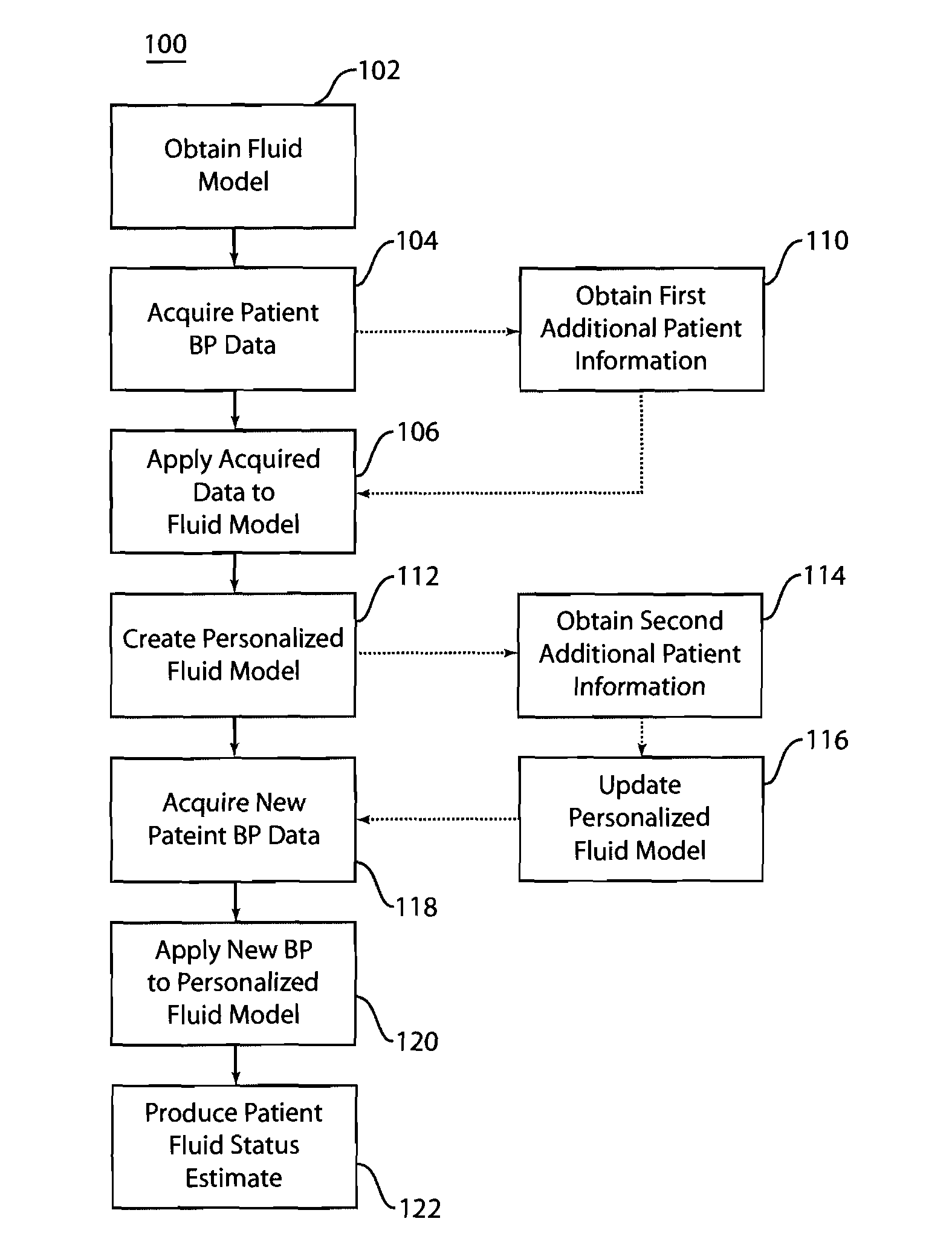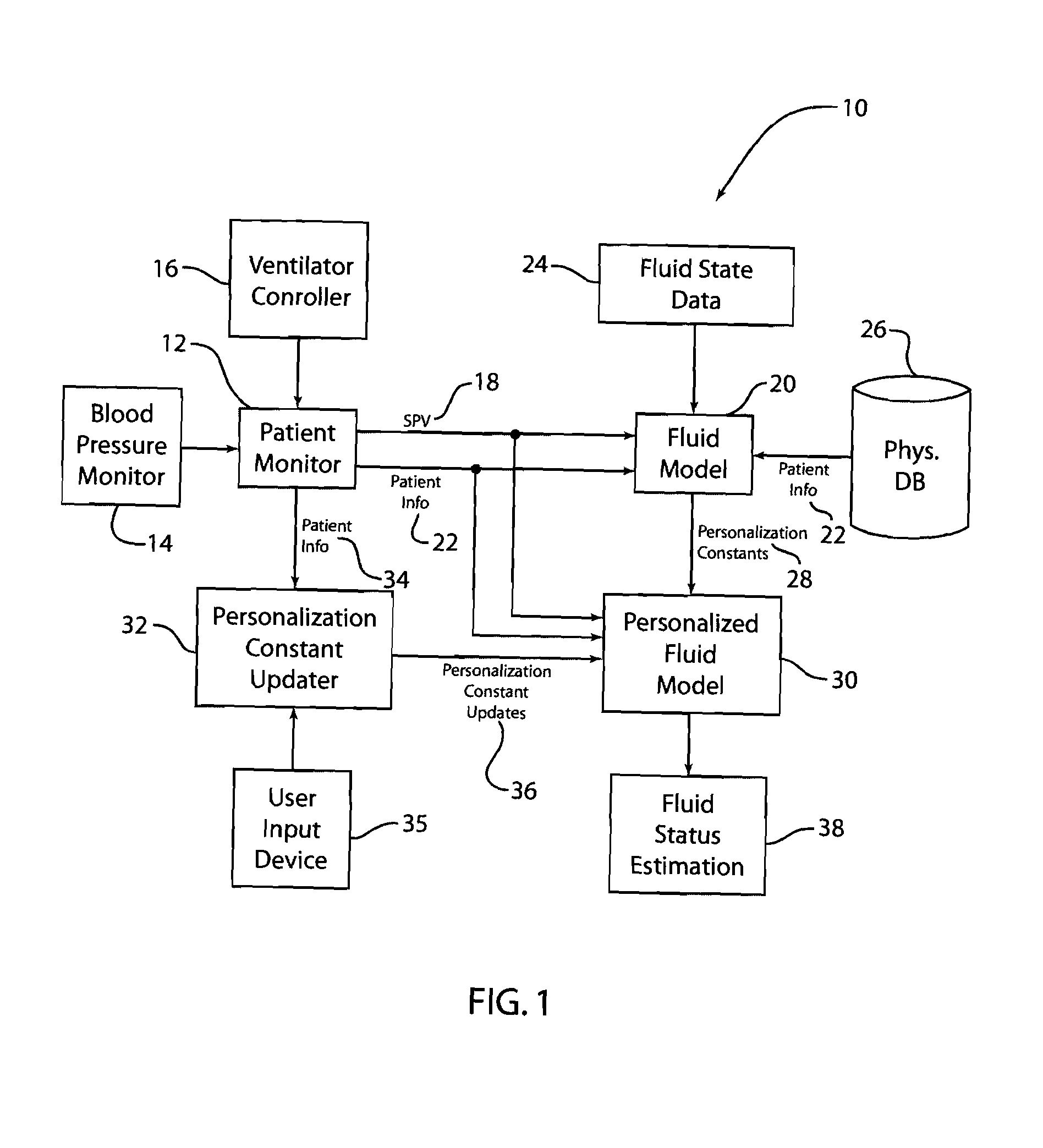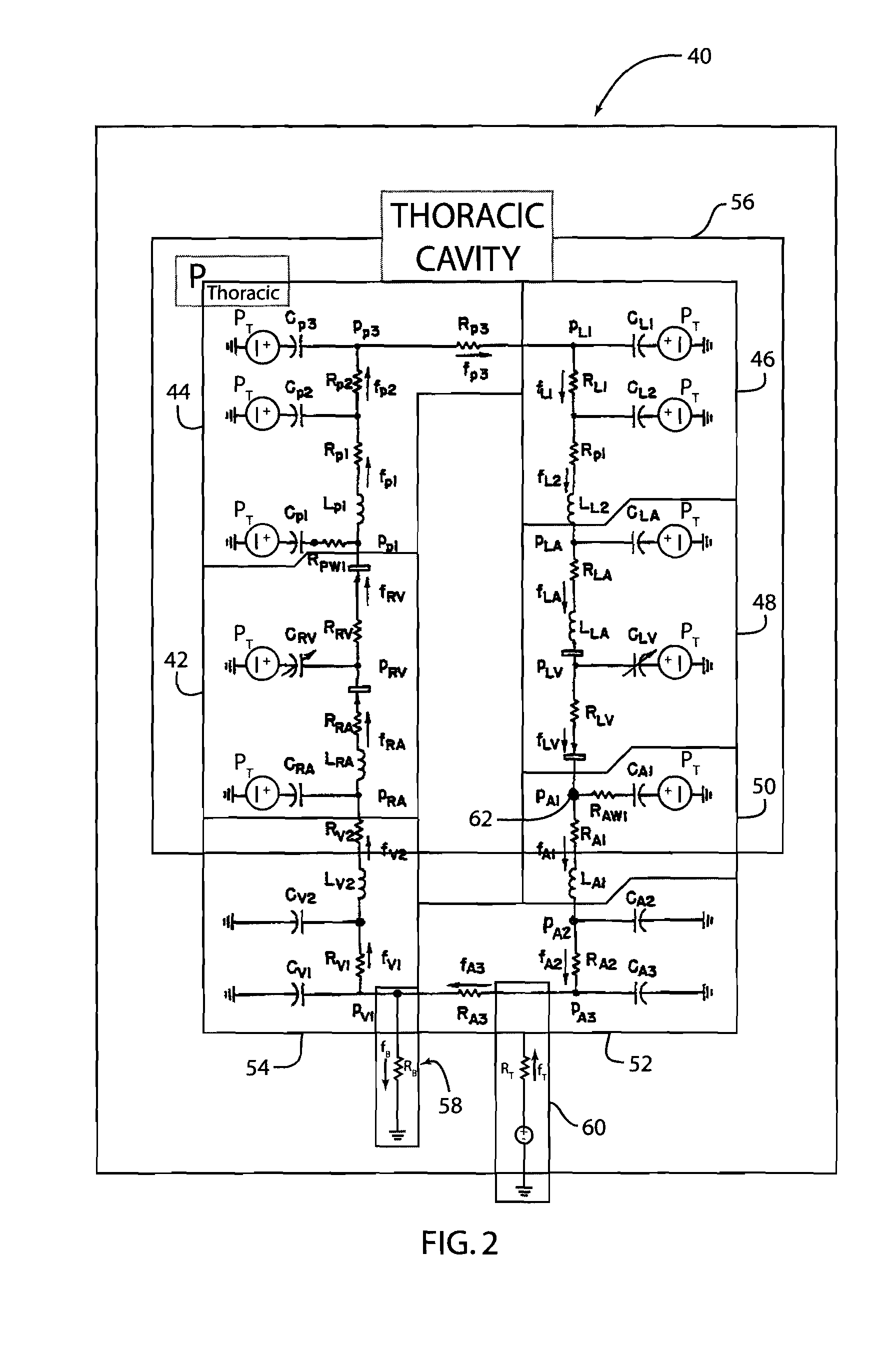Personalized fluid assessment
a fluid assessment and personalization technology, applied in the field of monitoring patient physiological parameters, can solve the problems of laborious estimation, limited current techniques for monitoring patient fluid status, and invasive techniques such as transesophagal echo that utilize ultrasound to monitor fluid movement in the thoracic cavity
- Summary
- Abstract
- Description
- Claims
- Application Information
AI Technical Summary
Problems solved by technology
Method used
Image
Examples
Embodiment Construction
[0012]Systolic pressure variation (SPV) is a physiological phenomenon found in the continuous arterial blood pressure of a patient receiving positive pressure ventilation (PPV). The PPV causes a cyclical change in intra-thoracic pressure experienced by the patient. The increase in intra-thoracic pressure during inhalation causes a decrease in the left ventricular after load by increasing the pressure gradient between the aorta and the systemic vasculature. These effects attenuate as the intra-thoracic pressure decreases during exhalation. The additional pressure also decreases the venus return by decreasing the pressure gradient between the vena cava and the right atrium. The overall effect seen in the monitored arterial blood pressure is that an increase in the systolic, or maximum, blood pressure (Δ up) is found during the periods of inhalation, while a decrease in the measured systolic pressure (Δ down) is found during exhalation.
[0013]The difference between the measured systolic...
PUM
 Login to View More
Login to View More Abstract
Description
Claims
Application Information
 Login to View More
Login to View More - R&D
- Intellectual Property
- Life Sciences
- Materials
- Tech Scout
- Unparalleled Data Quality
- Higher Quality Content
- 60% Fewer Hallucinations
Browse by: Latest US Patents, China's latest patents, Technical Efficacy Thesaurus, Application Domain, Technology Topic, Popular Technical Reports.
© 2025 PatSnap. All rights reserved.Legal|Privacy policy|Modern Slavery Act Transparency Statement|Sitemap|About US| Contact US: help@patsnap.com



